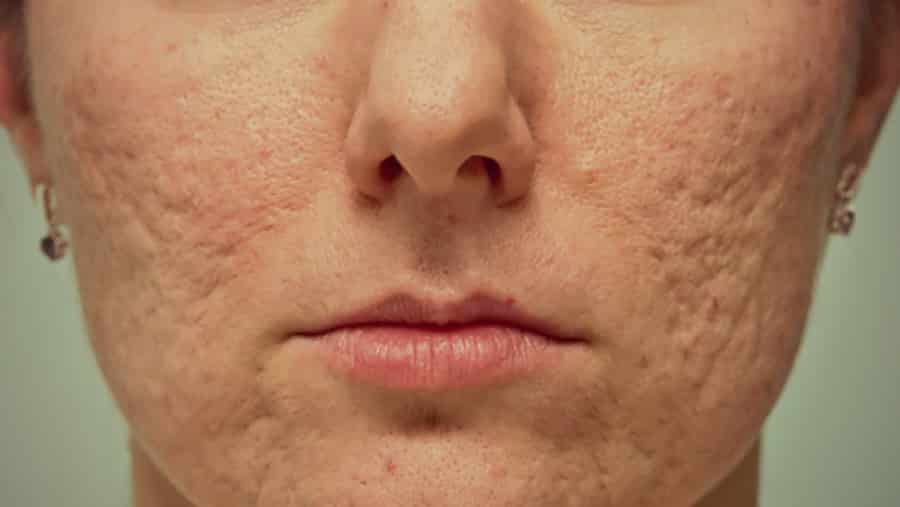Acne scarring is a very serious concern for people who have experienced the effects of it; sufferers commonly cite the psychological toll that acne scarring has on their personal lives, with its effects on confidence well documented.
At a Collins Cosmetic Clinic, we offer a range of treatments that can help you in reducing and removing acne scarring. We employ acne scar treatments that work to restore the supportive components in skin, helping firm and smooth it in the process while giving it volume.
How does Acne scarring treatment work?
Apart from laser therapies, acne scarring treatments can be performed using chemical peels, fat transfers or skin needling. Specifically, skin needling uses a tool comprised of surgical needles, which is then rolled across the surface of the skin, stimulating the body’s production of collagen, which helps skin recovery and reduces depressed scarring.
Types of Acne scars
Acne scarring can leave sufferers with long standing, even permanent, scars. Acne scars normally develop in areas where prior skin conditions have been prevalent, not least due to the development of acne itself. Acne scars are commonly categorized in three groups:
- Atrophic: These are scars which are shallow for the most part;
- Boxcar-shaped: Boxcar-shaped scars are those which tend to be larger;
- Ice pick-shaped: Ice pick-shaped scars are those which are both deep and narrow in appearance.
Moreover, people with lighter skin tones tend to produce redness within their scars, while people with darker skin tones may produce a darkening of the skin.
Acne scarring facts
With acne scarring having such a significant toll on confidence and emotional wellbeing, it may be surprising to learn just how widespread it is. There are misconceptions in society about acne being a by-product of teenage life primarily, dissipating once they reach adolescence. While an increase in oil secretion does begin during the early stages of puberty, the effects of acne affect all age groups. Below is a brief list of facts about acne that you may not be aware of:
- Acne actually encompasses a multitude of conditions that affect the skin, outside of the red pimple it’s commonly associated with. Alongside pimples, acne also refers to cysts and lumps in the skin, and also comprises of blocked pores like blackheads. Acne is not restricted to the face and can occur anywhere on the body, most commonly affecting skin in the upper part of the body, like the shoulders, face and arms;
- Every age group can develop acne. While most common in puberty-hit teens, acne affects every age group up to the 50s. People older than 50 develop acne less frequently, but they may have acne scarring resulting from prior acne problems;
- The three most common causes of acne are: a) Excessive production of oil in skin glands, b) Bacteria which grows within hair follicles, and c) Blocked hair follicles releasing oil.
Quick-fire Acne statistics
- Acne is the most common skin condition in Australia, affecting up to 1.5 million Australians;
- A staggering 85% of all people have had acne during their lives. Most acne outbreaks occurred in the face, shoulders, back or chest;
- Over 40% of people experience acne or scarring by their mid-teens;
- Acne treatment, including prescriptions and over the counter products, is a multi-billion dollar industry.













